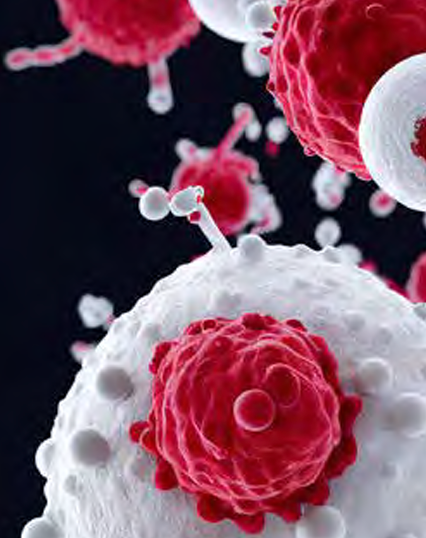Next-Generation 1928T2Z CAR T Cells Best Current-Generation Constructs
Next-generation CAR T cells, including 1928T2Z and WZTL-002, continue to be investigated for the treatment of patients with large B-cell lymphoma.

The development of next-generation chimeric antigen receptor (CAR) T cells continues to be explored by investigators in the large B-cell lymphoma (LBCL) arena. Researchers from the Malaghan Institute of Medical Research, Wellington, New Zealand, presented findings that evaluated 1928T2Z, or WZTL-002 in the US, a third-generation CAR T-cell product, during the European Society for Blood and Marrow Transplantation-European Hematology Association 5th European CAR T-cell Meeting.1
As an example of next-generation efficacy, Yasmin Nouri and colleagues pointed out that axicabtagene ciloleucel (axi-cel, Yescarta), the CD28-based CAR T, is more effective than tisagenlecleucel (tisa-cel, Kymriah) in LBCL.2 However, toxicities such as cytokine release syndrome (CRS) and immune effector cell–associated neurotoxicity (ICAN) remain problematic.3
“Of particular concern [is] ICAN, which occurs in approximately 50% of patients and is harder to treat than CRS,” said Nouri, a PhD candidate at the Malaghan Institute. “What if we could develop a product that would have the same efficacy or better efficacy [than] axi-cel, but reduce the toxicities?”
Nouri showed that 1928T2Z CAR T cells have equivalent or better cytotoxicity compared with 1928z in the ENABLE phase 1 dose escalation trial (NCT04049513). The researchers developed their own CAR T-cell construct that contains a CD28 costimulatory domain alongside a TLR2 custom domain and CD3ζ. In general, TLRs are found on the surface of innate immune cells, Nouri said.3 The TLR2 domain contains a mutation in the BB loop (MyD88 inhibition), another mutation in the DD loop, and a third that contains both mutations (BB/DD).
Cytotoxicity was measured using an Incucyte assay, which found that TLR2 signaling contributed to the activation and cytotoxicity of 1928T2Z CAR T cells. Nouri interpreted this to mean that “the TLR2 domain was contributing to the function of T cells and [this] encouraged us to look closely at the mechanism.”
RNA analysis involved examining a panel of 780 genes. Of those genes, investigators reviewed 57 genes that were uniquely upregulated with TLR2 signaling. Th2 genes—particularly IL4, IL5, and IL13—were the most highly regulated and Nouri said protein validation studies would follow.
“We know that TLR2 is active and contributing to the function of CAR T cells, but there [are] a few CAR T-cell products available,” Nouri said. “We wanted to compare our CAR T cells with other clinically relevant constructs.” When a serial cytotoxicity assay was implemented, the 1928T2Z CAR T cells outperformed the 1928z version. The serial cytotoxicity assay used 6 different editions of target cells over a 3-week period.
An in vitro assay revealed that 27 cytokines were highlighted; 2 of the most differentially secreted types—interferon gamma and granulocyte-macrophage colony-stimulating factor (GM-CSF)—were significantly lower in the 1928T2Z construct than the 1928z construct. “This is particularly interesting because interferon gamma and GM-CSF are 2 of the main cytokines that drive CAR T-cell– associated toxicity,” Nouri said.
In preliminary data from ENABLE, Nouri said that at all dose levels, which range from 5 × 104 cells/kg up to 1 × 106, no cases of grade 3 and higher CRS and no cases of ICANS have been observed. Complete responses have been in the 50% range, roughly equivalent to the ZUMA-1 trial (NCT02348216).4
“We believe our WZTL-002 CAR T has demonstrated equivalent or better cytotoxicity than second-generation CD28 costimulated construct while producing less potentially toxicity-inducing cytokines,” Nouri said. “We think this is what is contributing to the low toxicity rates that we’re seeing in our phase 1 trial.”
REFERENCES
1. Nouri Y. Third-generation CAR T cells incorporating a TLR2 domain: preclinical and phase 1 clinical trial findings. Presented at: European Society for Blood and Marrow Transplantation-European Hematology Association 5th European CAR T-cell Meeting; February 9-11, 2023; Rotterdam, The Netherlands. Abstract BA03-1. Accessed February 20, 2023. http://bit.ly/3Kpbz1H
2. Bachy, E, Le Gouill, S, Di Blasi, R, et al. A real-world comparison of tisagenlecleucel and axicabtagene ciloleucel CAR T cells in relapsed or refractory diffuse large B cell lymphoma. Nat Med. 2022;28:2145–2154. doi:10.1038/s41591022-01969-y
3. Bachy E, Le Gouill S, Di Blasi R, et al. A real-world comparison of tisagenlecleucel and axicabtagene ciloleucel CAR T cells in relapsed or refractory diffuse large B cell lymphoma. Nat Med. 2022;28(10):2145-2154. doi:10.1038/s41591-02201969-y
4. Neelapu SS, Locke FL, Bartlett NL, et al. Axicabtagene ciloleucel CAR T-cell therapy in refractory large B-cell lymphoma. N Engl J Med. 2017;377(26):2531-2544. doi:10.1056/ NEJMoa1707447

Survivorship Care Promotes Evidence-Based Approaches for Quality of Life and Beyond
March 21st 2025Frank J. Penedo, PhD, explains the challenges of survivorship care for patients with cancer and how he implements programs to support patients’ emotional, physical, and practical needs.
Read More